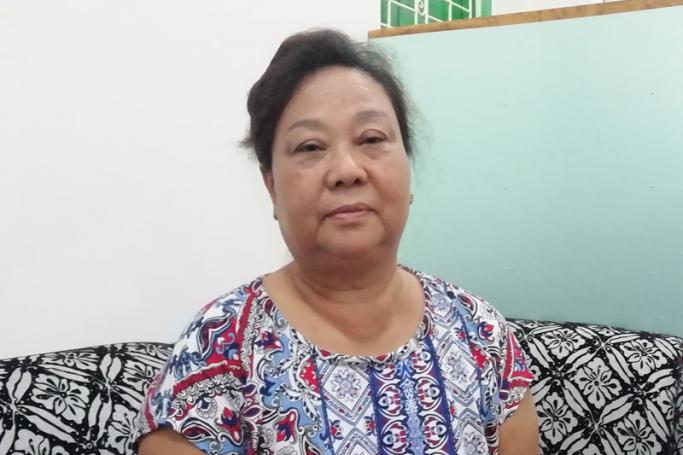As the New Year begins, Daw Shu, founder of the Pearl Heart Animal Shelter, continues her work to help as many of Yangon’s stray dogs as she can.
“I want the dogs to be safe, that they might not be killed by the government or anyone else,” said Daw Shu, referring to the culling of stray dogs by the Yangon City Development Committee, the city’s administrative body.
Daw Shu said she also worries about the treatment of abandoned dogs by local residents.
“Most people, if they don’t like their dog, they leave them, and their neighbours might kill it,” she said.
Stray dogs are a frequent sight in the city, lying under cars and trucks for the shade or crossing roads amidst heavy traffic. Without veterinary support, injuries such as unwashed wounds and disjointed legs are common.
Estimates for the number of stray dogs in Yangon vary. Government figures from 2014 reported more than 70,000 stray dogs, while a figure cited by the Guardian UK newspaper in 2017 put the total at over 120,000.
The Pearl Heart Animal Shelter has the facilities to care for 380 dogs.
According to Daw Shu, running the shelter costs K5,000,000 a month, requiring financial support from donors and Daw Shu’s own funds to pay staff and cover the expenses.
“I don’t want any dogs to be killed, it’s my main purpose,” Daw Shu said.
The YCDC defends its decision to use culling to handle stray dogs, considering the practise necessary under certain circumstances. According to Dr Hla May Oo, the Assistant Head of the Veterinary and Slaughterhouse Department, culling only occurs if the department receives a complaint from residents about stray dogs.
“Sometimes, according to the public desire, we do dog culling activities in the city,” Dr Hla May Oo said, adding she could not confirm the number of stray dogs culled this year.
The Veterinary and Slaughterhouse Department previously ran a sterilisation and vaccination programme to reduce the dog populations in parts of the city.
In 2016 they reported the successful sterilisation and vaccination of the stray dog population in four townships, following up with further vaccinations in 2017.
However, the stray dog population in the remaining 29 townships still require sterilisation and vaccination. Dr Hla May Oo said the department needed more resources to successfully complete a citywide sterilisation and vaccination programme in Yangon.
“We do not have the medicine and vaccinations,” Dr Hla May Oo said, with the department also lacking the necessary anaesthesia drugs and surgical apparatus required.
Despite their differences, Dr Hla May Oo and Daw Shu both say that Yangon needs support from international NGOs and foreign partners to effectively reduce the stray dog population in a humane manner.
“I urge NGOs and any countries, please support us for the sterilisation of the dog population,” Dr Hla May Oo said.
Daw Shu also said she hoped that more Yangon residents will show compassion and understanding to the stray dogs of Yangon.
“The most important thing is not to poison the dogs anymore, save the street dog. Please be kind and treat them with some food.”












